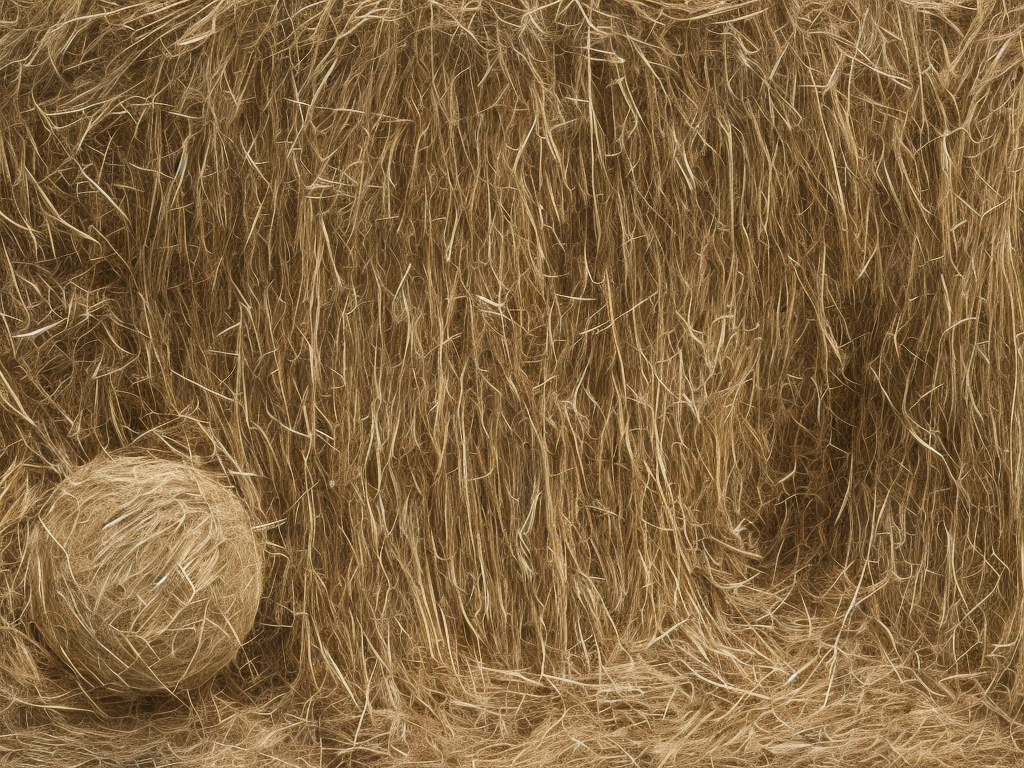
Hay and straw are two common terms that are often used interchangeably when it comes to discussing livestock bedding and animal feed. While they may appear similar and perform some similar functions, there are key differences between these two agricultural products that are important to understand in order to make informed decisions when it comes to animal care.
Hay is typically the most commonly used term when it comes to discussing animal feed. It refers to dried grasses, legumes, or other herbaceous plants that have been harvested and stored for the purpose of feeding animals. Hay is commonly made from plants such as timothy, alfalfa, and clover. It is typically cut when the plants have reached their maximum nutritional value, but before they have produced seeds.
The preparation process for hay involves cutting the plants and allowing them to dry in the field. Once sufficiently dry, the hay is baled and stored for future use. The drying process is important to ensure that the hay retains its nutritional value and does not foster the growth of mold or bacteria. Hay is often used as a primary source of nutrition for livestock, especially during the winter months when fresh grazing is limited.
On the other hand, straw is the leftover stalks and stems from harvested grain crops, such as wheat, barley, or oats. Unlike hay, straw is not intended for direct animal consumption as it lacks the necessary nutritional value. Instead, straw is primarily used as bedding material for livestock, particularly in barns and stables.
Straw is desirable as bedding material for several reasons. Firstly, it is relatively inexpensive and widely available since it is a byproduct of grain production. Secondly, straw is highly absorbent, making it effective in managing moisture and odor in animal housing. Lastly, straw is less likely to harbor mold or pests, which can be detrimental to animal health.
While both hay and straw have their respective uses, the main difference lies in their nutritional content. Hay is harvested at a specific stage when the plants are at their peak nutritional value, making it an excellent source of nutrients for animals. It contains essential vitamins and minerals that can contribute to the overall health and productivity of livestock. In contrast, straw lacks the nutritional value necessary for animal consumption and is notably lower in protein and energy content compared to hay.
Another difference between hay and straw lies in their texture and appearance. Hay is generally softer and more flexible, with a leafy texture. It is used as a feed source and can be consumed by animals directly. On the other hand, straw has a coarser texture with long, hollow stems. It is not suitable for consumption, but rather used as bedding material to provide a comfortable and clean area for animals to rest.
In addition to their nutritional and textural differences, hay and straw also differ in terms of cost and availability. Due to the additional effort involved in cultivating, harvesting, and storing hay, it is generally more expensive than straw. The nutrient content of hay also affects its price, with higher-quality hay typically being more expensive. Straw, on the other hand, is more readily available and affordable as it is a byproduct of grain production.
Understanding the differences between hay and straw is essential for animal owners and farmers to ensure the proper care and feeding of their livestock. Hay provides the necessary nutrients for animals and is typically used as a primary source of feed during winter or when fresh grazing is limited. Straw, on the other hand, serves as an effective bedding material to promote cleanliness and comfort in animal housing.
When purchasing hay or straw, it is important to consider factors such as nutritional content, texture, cost, and availability. The specific needs and requirements of the animals should be taken into account to determine the appropriate choice. Consulting with local agricultural experts or veterinarians can provide valuable guidance in selecting the suitable option for animal care.
In conclusion, while hay and straw may appear similar at first glance, there are important distinctions between the two agricultural products. Hay is a nutrient-rich feed source for livestock, while straw serves as bedding material. Understanding the differences between these two materials is crucial in ensuring optimal animal health and comfort. By making informed decisions based on the unique characteristics of hay and straw, animal owners and farmers can provide the best care for their livestock.
 Self-Instruct
Self-Instruct